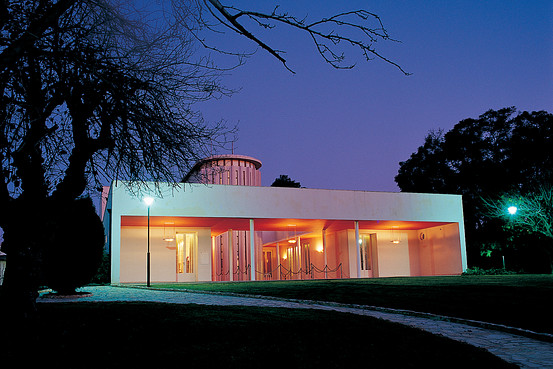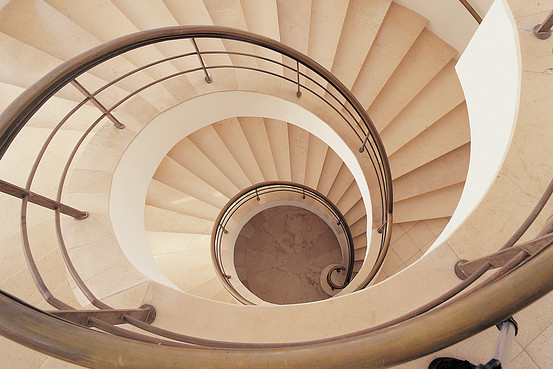
The Weizmann House, an ultra-Modernist structure that dates back to 1937, was the home of Israel's first president. The Weizmann Institute of Science
PRE-NAZI GERMANY may have been the birthplace of the Modernist design aesthetic known as Bauhaus, but it was in Tel Aviv that the movement made its most lasting impact. Flooded in the 1930s by Jewish refugees fleeing rising anti-Semitism, the young, Mediterranean city became a laboratory for architects itching to translate theory and ideology into buildings.
The result is the world's greatest collection of Bauhaus and International Style buildings—some 4,000 in total. Crafted from crisp, white concrete and typically perched on leg-like pillars, the buildings are easily identifiable by their flat roofs, angular facades and nautical-style windows. Standing in sharp contrast to their elaborately detailed Ottoman predecessors, these stark, functional structures are perfectly suited both to Tel Aviv's harsh, humid climate and its rapidly expanding population.
In July 2003, Unesco declared Tel Aviv's Bauhaus-rich core—affectionately known as the White City—a World Heritage Site. Since then, the city's Bauhaus patrimony has given a fillip to both its cultural and commercial status. Hotels, restaurants, shops and museums now occupy meticulously restored Bauhaus buildings, while Bauhaus-era real estate is among Tel Aviv's most expensive.
Most crucially, Tel Aviv's unrivaled Bauhaus bounty has lured art- and architecture-curious travelers, helping Israel's once-battered tourism industry recently reach record numbers.
The Weizmann House

The Weizmann House may be Israel's most significant Modernist building. The Weizmann Institute of Science
This ultra-Modernist structure dates back to 1937 and is notable on many levels: as the home of Chaim Weizmann, Israel's first president; as the anchor of the research institute that bears his name; and, perhaps, as Israel's most significant Modernist building. The 25-room home was designed by architect Erich Mendelsohn, the German-Jewish Modernist master who fled the Nazis for England in 1933, set up an office in Palestine and built some of Israel's most important buildings before he decamped to the U.S. in 1941. Set among orchards and groves, the house is a perfectly proportioned mix of whitewashed walls, columned courtyards, porthole windows and tranquil pools. Fully renovated, it's a must-visit for any serious Modernism fan.
Herzl Street, Rehovot; chaimweizmann.org.il
For full article, click here.
